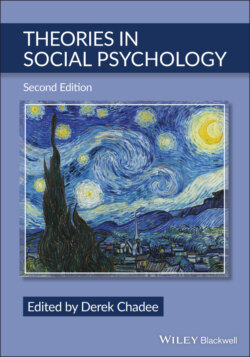Читать книгу Theories in Social Psychology - Группа авторов - Страница 26
Criticisms of Reactance
ОглавлениеThe theory of psychological reactance has been criticized on a number of grounds. First, the theory is difficult to falsify. The emphasis of research has been on situational reactance, with experimental conditions set up to create threats to freedom. Inconsistent findings are easily explained by reference to the situation rather than an exploration of the theory to identify theoretical problems. The lack of explicitly stated propositions and hypotheses provides further insulation of the theory from the systematic assaults of science. However, other theories such as Freud’s psychoanalytical theory and Festinger’s cognitive dissonance theory have also been criticized on these grounds.
Second, the concept of reactance is a scientifically vague concept. There is tremendous latitude left to the interpretation of exactly what behavior is reactance or non-reactance.
Premised on the concept of reactance, the magnitude of reactance is discussed. The concept of magnitude assumes some kind of scale or degree distinction between one level of reactance and another. Exactly how to evaluate the magnitude of reactance is not stated in the theory. Therefore, the concept of magnitude of reactance has two ambiguous terms which have implications for scientific measurement of the concept. Reactance cannot be physically observed but is inferred from measures of indicators of reactance which vary from study to study. Third, the theory is parsimonious and can, therefore, explain a wide range of behavior in a variety of social settings. A theory with such versatility loses its efficacy in explaining and creates a diminishing level of confidence.
Fourth, reactance theory is not designed to assess the dynamism of social interaction and exchanges in the movement toward reduction of the psychological tension and achievement of equilibrium. Freedom can only be threatened by a powerful other. The exchanges and power dynamics in reasserting one’s freedom are not examined or articulated in the theory. The magnitude of reactance, the persistence of reduction, the kinds of reduction strategies, and the acceptance or removal of threat to freedom can all be better comprehended if an analysis of the power dynamics complements the theory.
Fifth, the psychological processes involved in internalizing free behaviors are not articulated by the theory (Wicklund, 1997). This is an assumption, a given, at the core of the theory. An elaboration of the dynamics involved in the development of free behaviors will provide a profound understanding of the processes involved in reactance. The cultural contexts and their contribution to one’s sense of freedom need elaboration via cross-cultural research.
Sixth, is reactance a behavioral attempt to demonstrate and project an impression of autonomy and power to others in the interaction situation? In other words, is there a distinction between impression management and reactance? Heilman and Toffler (1976), for example, argue that reduction of reactance was a direct function of balance of power, or the impression of it, in interaction. Baer et al.’s (1980) findings support the view that there is a greater concern with demonstrating the possession of a freedom than concern about the removal of the freedom. Wright and Brehm (1982, p. 616) in being critical of the impression management explanation of reactance, write:
In summary, then, the impression management explanation of reactance, in contrast to reactance theory, predicts no effects when (a) threats to freedom are nonsocial or social threats are unintentional, (b) subjects’ responses are private (nobody who has witnessed the threat will see them, or subjects’ responses cannot be traced back to them individually), and (c) freedom restoration occurs without the agent or an observer being aware of it. We believe that it is doubtful that reactance effects can best be understood as a manifestation of impression management.
Seventh, reactance theory places great emphasis on the cognitive, but minimal emphasis is given to the affect state. The next section proposes the introduction of the affect state into the theory of psychological reactance.
